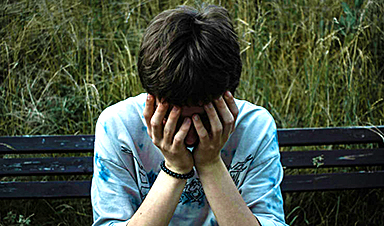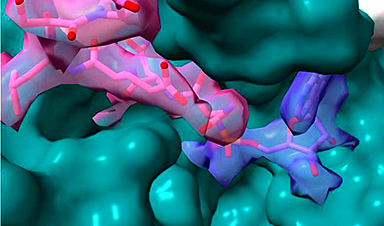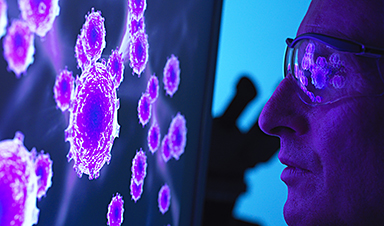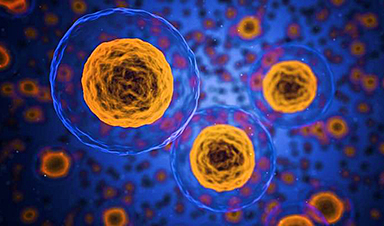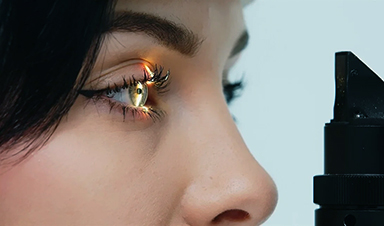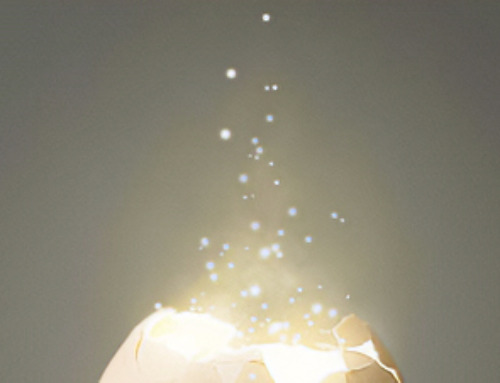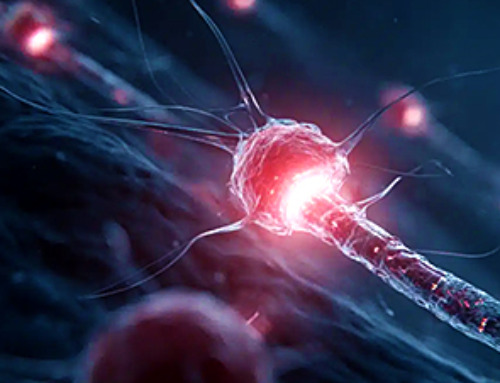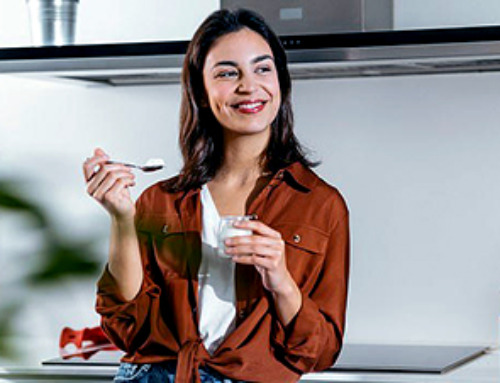Suite of DNA nanotechnology devices engineered to overcome specific bottlenecks in the development of new therapies, diagnostics, and understanding of molecular structures.
DNA nanostructures with their potential for cell and tissue permeability, biocompatibility, and high programmability at the nanoscale level are promising candidates as new types of drug delivery vehicles, highly specific diagnostic devices, and tools to decipher how biomolecules dynamically change their shapes, and interact with each other and with candidate drugs. Wyss Institute researchers are providing a suite of diverse, multifunctional DNA nanotechnological tools with unique capabilities and potential for a broad range of clinical and biomedical research areas.
DNA nanotechnological devices for therapeutic drug delivery
DNA nanostructures have future potential to be widely used to transport and present a variety of biologically active molecules such as drugs and immune-enhancing antigens and adjuvants to target cells and tissues in the human body.
DNA origami as high-precision delivery components of cancer vaccines
The Wyss Institute has developed cancer vaccines to improve immunotherapies. These approaches use implantable or injectable biomaterial-based scaffolds that present tumor-specific antigens, and biomolecules that attract dendritic immune cells (DCs) into the scaffold, and activate them so that after their release they can orchestrate anti-tumor T cell responses against tumors carrying the same antigens. To be activated most effectively, DCs likely need to experience tumor antigens and immune-boosting CpG adjuvant molecules at particular ratios (stoichiometries) and configurations that register with the density and distribution of receptor molecules on their cell surface.
Specifically developed DNA origami, programmed to assemble into rigid square-lattice blocks that co-present tumor antigens and adjuvants to DCs within biomaterial scaffolds with nanoscale precision have the potential to boost the efficacy of therapeutic cancer vaccines, and can be further functionalized with anti-cancer drugs.
Chemical modification strategy to protect drug-delivering DNA nanostructures
DNA nanostructures such as self-assembling DNA origami are promising vehicles for the delivery of drugs and diagnostics. They can be flexibly functionalized with small molecule and protein drugs, as well as features that facilitate their delivery to specific target cells and tissues. However, their potential is hampered by their limited stability in the body’s tissues and blood. To help fulfill the extraordinary promise of DNA nanostructures, Wyss researchers developed an easy, effective and scalable chemical cross-linking approach that can provide DNA nanostructures with the stability they need as effective vehicles for drugs and diagnostics.

In two simple cost-effective steps, the Wyss’ approach first uses a small-molecule, unobtrusive neutralizing agent, PEG-oligolysine, that carries multiple positive charges, to cover DNA origami structures. In contrast to commonly used Mg2+ ions that each neutralize only two negative changes in DNA structures, PEG-oligolysine covers multiple negative charges at one, thus forming a stable “electrostatic net,” which increases the stability of DNA nanostructures about 400-fold. Then, by applying a chemical cross-linking reagent known as glutaraldehyde, additional stabilizing bonds are introduced into the electrostatic net, which increases the stability of DNA nanostructures by another 250-fold, extending their half-life into a range that is compatible with a broad range of clinical applications.
DNA nanotechnological devices as ultrasensitive diagnostic and analytical tools
The generation of detectable DNA nanostructures in response to a disease or pathogen-specific nucleic acids, in principle, offers a means for highly effective biomarker detection in diverse samples. A single molecule binding event of a synthetic oligonucleotide to a target nucleic acid can nucleate the creation of much larger structures by the cooperative assembly of smaller synthetic DNA units like DNA tiles or bricks into larger structures that then can be visualized in simple laboratory assays. However, a central obstacle to these approaches is the occurrence of (1) non-specific binding and (2) non-specific nucleation events in the absence of a specific target nucleic acid which can lead to false-positive results. Wyss DNA nanotechnologists have developed two separately applicable but combinable solutions for these problems.
Digital counting of biomarker molecules with DNA nanoswitch catenanes
To enable the initial detection (binding) of biomarkers with ultra-high sensitivity and specificity, Wyss researchers have developed a type of DNA nanoswitch that, designed as a larger catenane (Latin catena meaning chain), is assembled from mechanically interlocked ring-shaped substructures with specific functionalities that together enable the detection and counting of single biomarker molecules. In the “DNA Nanoswitch Catenane” structure, both ends of a longer synthetic DNA strand are linked to two antibody fragments that each specifically bind different parts of the same biomarker molecule of interest, thus allowing for high target specificity and sensitivity.
This bridging-event causes the strand to close into a “host ring,” which it is interlocked at different regions with different “guest rings.” Closing of the host ring switches the guest rings into a configuration that allows the synthesis of a new DNA strand. The newly synthesized diagnostic strand then can be unambiguously detected as a single digital molecule count, while disrupting the antibody fragment/biomarker complex starts a new biomarker counting cycle. Both, the target binding specificity and the synthesis of a target-specific DNA strand also enable the combination of multiple DNA nanoswitch catenanes to simultaneously count different biomarker molecules in a single multiplexed reaction.
For ultrasensitive diagnostics, it is desirable to have the fastest amplification and the lowest rate of spurious nucleation. DNA nanotechnology approaches have the potential to deliver this in an enzyme-free, low-cost manner.
A rapid amplification platform for diverse biomarkers
A rapid, low-cost and enzyme-free detection and amplification platform avoids non-specific nucleation and amplification and allows the self-assembly of much larger micron-scale structures from a single seed in just minutes. The method, called “Crisscross Nanoseed Detection” enables the ultra-cooperative assembly of ribbons starting from a single biomarker binding event. The micron-scale structures are densely woven from single-stranded “DNA slats,” whereby an inbound slat snakes over and under six or more previously captured slats on a growing ribbon end in a “crisscross” manner, forming weak but highly-specific interactions with its interacting DNA slats. The nucleation of the assembly process is strictly target-seed specific and the assembly can be carried out in a one-step reaction in about 15 minutes without the addition of further reagents, and over a broad range of temperatures. Using standard laboratory equipment, the assembled structures then can be rapidly visualized or otherwise detected, for example, using high-throughput fluorescence plate reader assays.
News
Scientists Are Pretty Close to Replicating the First Thing That Ever Lived
For 400 million years, a leading hypothesis claims, Earth was an “RNA World,” meaning that life must’ve first replicated from RNA before the arrival of proteins and DNA. Unfortunately, scientists have failed to find [...]
Why ‘Peniaphobia’ Is Exploding Among Young People (And Why We Should Be Concerned)
An insidious illness is taking hold among a growing proportion of young people. Little known to the general public, peniaphobia—the fear of becoming poor—is gaining ground among teens and young adults. Discover the causes [...]
Team finds flawed data in recent study relevant to coronavirus antiviral development
The COVID pandemic illustrated how urgently we need antiviral medications capable of treating coronavirus infections. To aid this effort, researchers quickly homed in on part of SARS-CoV-2's molecular structure known as the NiRAN domain—an [...]
Drug-Coated Neural Implants Reduce Immune Rejection
Summary: A new study shows that coating neural prosthetic implants with the anti-inflammatory drug dexamethasone helps reduce the body’s immune response and scar tissue formation. This strategy enhances the long-term performance and stability of electrodes [...]
Scientists discover cancer-fighting bacteria that ‘soak up’ forever chemicals in the body
A family of healthy bacteria may help 'soak up' toxic forever chemicals in the body, warding off their cancerous effects. Forever chemicals, also known as PFAS (per- and polyfluoroalkyl substances), are toxic chemicals that [...]
Johns Hopkins Researchers Uncover a New Way To Kill Cancer Cells
A new study reveals that blocking ribosomal RNA production rewires cancer cell behavior and could help treat genetically unstable tumors. Researchers at the Johns Hopkins Kimmel Cancer Center and the Department of Radiation Oncology and Molecular [...]
AI matches doctors in mapping lung tumors for radiation therapy
In radiation therapy, precision can save lives. Oncologists must carefully map the size and location of a tumor before delivering high-dose radiation to destroy cancer cells while sparing healthy tissue. But this process, called [...]
Scientists Finally “See” Key Protein That Controls Inflammation
Researchers used advanced microscopy to uncover important protein structures. For the first time, two important protein structures in the human body are being visualized, thanks in part to cutting-edge technology at the University of [...]
AI tool detects 9 types of dementia from a single brain scan
Mayo Clinic researchers have developed a new artificial intelligence (AI) tool that helps clinicians identify brain activity patterns linked to nine types of dementia, including Alzheimer's disease, using a single, widely available scan—a transformative [...]
Is plastic packaging putting more than just food on your plate?
New research reveals that common food packaging and utensils can shed microscopic plastics into our food, prompting urgent calls for stricter testing and updated regulations to protect public health. Beyond microplastics: The analysis intentionally [...]
Aging Spreads Through the Bloodstream
Summary: New research reveals that aging isn’t just a local cellular process—it can spread throughout the body via the bloodstream. A redox-sensitive protein called ReHMGB1, secreted by senescent cells, was found to trigger aging features [...]
AI and nanomedicine find rare biomarkers for prostrate cancer and atherosclerosis
Imagine a stadium packed with 75,000 fans, all wearing green and white jerseys—except one person in a solid green shirt. Finding that person would be tough. That's how hard it is for scientists to [...]
Are Pesticides Breeding the Next Pandemic? Experts Warn of Fungal Superbugs
Fungicides used in agriculture have been linked to an increase in resistance to antifungal drugs in both humans and animals. Fungal infections are on the rise, and two UC Davis infectious disease experts, Dr. George Thompson [...]
Scientists Crack the 500-Million-Year-Old Code That Controls Your Immune System
A collaborative team from Penn Medicine and Penn Engineering has uncovered the mathematical principles behind a 500-million-year-old protein network that determines whether foreign materials are recognized as friend or foe. How does your body [...]
Team discovers how tiny parts of cells stay organized, new insights for blocking cancer growth
A team of international researchers led by scientists at City of Hope provides the most thorough account yet of an elusive target for cancer treatment. Published in Science Advances, the study suggests a complex signaling [...]
Nanomaterials in Ophthalmology: A Review
Eye diseases are becoming more common. In 2020, over 250 million people had mild vision problems, and 295 million experienced moderate to severe ocular conditions. In response, researchers are turning to nanotechnology and nanomaterials—tools that are transforming [...]


